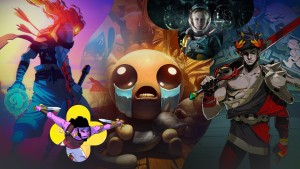Please support Game Informer. Print magazine subscriptions are less than $2 per issue
Burning Questions For Pokémon Sun & Moon

The release of Pokémon Sun and Moon next month ends an uncharacteristically large gap between the release of core Pokémon games. Omega Ruby and Alpha Sapphire release two years ago, which has given us plenty of time to come up with questions about the next entry in the series, as well as the broader Pokémon universe. We make it a point to ask long-time series producer, director and composer Junichi Masuda important Pokémon questions whenever we get to talk to him, like what does Rare Candy taste like, what really happens inside a Pokéball, and what's the deal with Klefki? This interview is no different, and you will also learn some new details about Pokémon Sun and Moon.
Game Informer: Is Yungoos/Gumshoos modeled after Donald Trump?
Junichi Masuda: It’s a very American-centric question I think, and actually a lot of people sent me comparison photos on Twitter pointing out the resemblance. But we had started the design of this Pokémon a long time back, and we didn’t have any intention to make it look like Donald Trump.
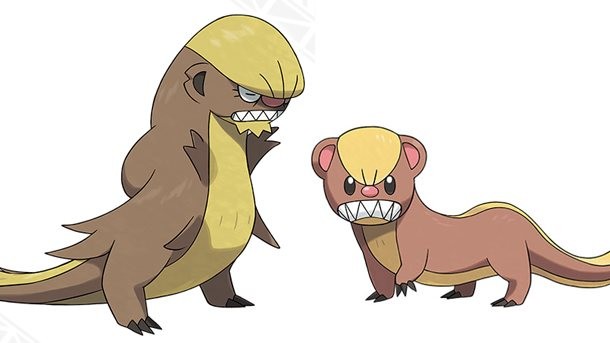
Have any Pokémon designs ever been inspired by current events?
Shigeru Ohmori: We don’t really look at current events that are going on, but one thing we do do sometimes when designing Pokémon is kind of see what kids of that era might like. Like for example maybe if there’s like a popular animal as a pet in a certain era then we might wanna try to come up with a certain Pokémon based off of that, to kind of really just focus on what kids of this era might like.
You can at least admit that the resemblance is pretty uncanny, right?
Junichi Masuda: Yeah, we were really surprised when I saw those photos. I can see why people would think it would look similar, especially the hair style.
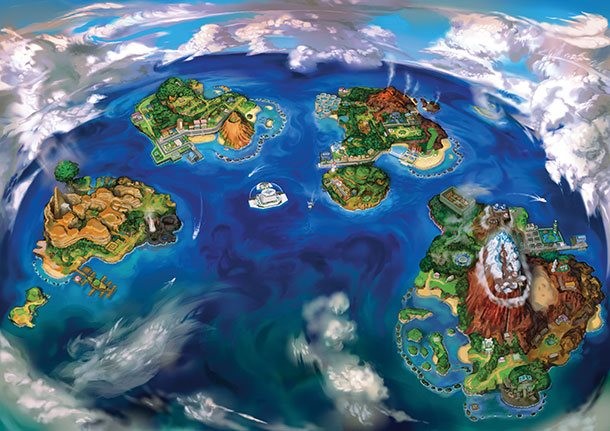
Why Hawaii for Sun and Moon?
Shigeru Ohmori: It kind of goes back to we knew this was gonna be a 20th anniversary game. I really went back to kind of just the basics to really re-examine at this time 20 years of Pokémon: What are Pokémon? What kind of creatures are they as living beings? For example, when thinking about how to really just best express this concept I knew I wanted to focus on this idea of life and how the sun and moon are involved with creating life on this planet, and in terms of a region that would be best representative of that.
I have been to Hawaii a lot on vacations, and I know how good Hawaii is. It captures it all. You get all the warm sun, and it’s full of life and nature and it really captures all these concepts that I wanted to go through – the sun and the moon affecting life on this planet – and also kind of how the people in Hawaii really live with nature, and I felt that would just be a kind of suitable inspiration for the region that would one day express these concepts.
Some of the first trailers for the game shows concept art of vehicles. Are vehicles going to be an important part of the game? Are we going to see more vehicles in Pokémon Sun and Moon?
Shigeru Ohmori: This goes back to the conceptual stages. We really wanted to kind of re-examine or put the focus again on the relationship between humans and Pokémon and come up with a lot of different ideas about how they might interact with each other and the world. How they might, for example, work together or live together. So a lot of conceptual art pieces in the beginning stages showed maybe humans would be using vehicles and the Pokémon would be riding in them. As development went on, we kind of settled in terms of getting around in the game using the Pokémon ride feature, where you can ride on a variety of different Pokémon, so the focus really isn’t specifically on a lot of more vehicles then you would see in the past. I mean, there are some vehicles in the game that do appear.
We’ve only seen the original Kanto Pokémon in Alola forms. What's the reason for that?
Shigeru Ohmori: This is really my first time working as a director on a completely all-new title. Last time, Omega Ruby and Alpha Sapphire was kind of remake of an older title. Also with this being the 20th anniversary, I was just thinking that we have so many fans – long-time fans of the game that have played since the beginning, and I really wanted to have a special surprise for those players. Also for the fact that Pokémon from the Kanto region of the original game are probably the most recognizable among long-time fans. So I really wanted to kind of focus on them and give them kind of them a new take on their appearance to really surprise them. But at the same time, by having the new appearance they kind of look like new Pokémon for a lot of new players who are maybe just getting started with Pokémon. So that was the reason we decided to focus on Kanto Pokémon.
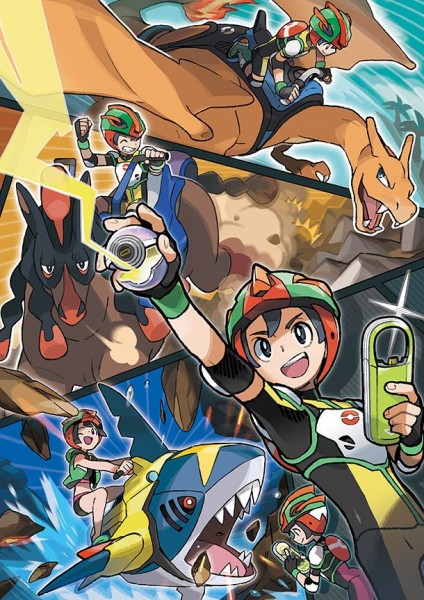
We saw Professor Oak’s cousin in a recent trailer. Are we going to see more of Professor Oak’s extended family in the game?
Junichi Masuda: The cousin character, Samson Oak – we actually put that guy in the game to represent the Alola variants. He’s kind of an Alola variant himself, and that’s kind of his goal in the Alola region: to research these Pokémon that have adapted to the Alolan environment and changed how they appear. There are some other characters that may show up and may be recognized by fans of the previous games. So there’s some characters recurring, and maybe they show up with a different look than they had before. But in terms of Oak’s extended family, I think this is the only guy in Sun and Moon.
In Omega Ruby and Alpha Sapphire, you could soar over the top of the map? Are you going to be able to do that in Sun and Moon?
Shigeru Ohmori: With Omega Ruby and Alpha Sapphire, it being kind of a remake of a game from over a decade ago, we really wanted to show it from a different perspective, which is why we did the soar feature, which allows you to fly the skies. But with Sun and Moon, we really put the focus more on doing this rite of passage to travel across to different islands. We really put the focus more on walking the islands with your own two feet.
Have you been surprised by the success of Pokémon Go? And has any of that game's success factored into the development of Sun and Moon?
Junichi Masuda: First, with Pokémon Go, I personally didn't expect it to be such a big phenomenon that it had become. When we were first beginning the development of the game, I really just kind of expected it a lot – I mean, I guessed a lot of people would play it, but a smaller thing, where people would just enjoy going outside and catching some Pokémon. That was really actually where we put the focus of the game. We really wanted to kind of distill the experience of catching Pokémon, make it a simple experience, you can go outdoors specifically, walk around, find Pokémon, and catch them. I really just wanted to kind of express that concept with the Pokémon Go application.
And because of that we took Pokémon Go – we knew from the beginning, that was the direction of the game and with Sun and Moon, we wanted it to be more a deep experience, that people would spend a lot more time enjoying the game, not just catching Pokémon but also raising them and getting into the battling. Really just being immersed and enjoying the Pokémon universe. In terms of whether Go's success affected Sun and Moon? It didn't affect the development of the game, any of the features, but I think it's going to affect it in a way that, more people, for example, maybe just learned about Pokémon, or came back to Pokémon through Go. I think the awareness of Pokémon in general is a lot higher, so that may affect Sun and Moon in a certain way.
Will there be any cross-promotion between the two games, Pokémon Go and Sun & Moon? Like, Pokémon unlocking in one because you played the other, etc.?
Junichi Masuda: With Pokémon Go, yeah, we definitely want to have some kind of – at some point – some kind of connectivity, some way the games can interact. A lot of people, of course, knew Pokémon from the animated series, but Pokémon Go reached even way more people than the anime. It's released in more countries and has reached a much wider audience. So, I think a lot of people maybe learned about Pokémon for the first time from Pokémon Go, the core concept of throwing out a Pokéball and catching a Pokémon, so we don't want to waste that. We want people who picked up Pokémon and learned about it through Pokémon Go to also play Sun and Moon and the main series games. We want to have a kind of way to connect the two, or have a way for people who enjoyed one to enjoy some of their progress in the other. But that will definitely come down the road.
Are you personally playing Pokémon Go. And more importantly, do you know how to find Ditto?
Junichi Masuda: [laughs] Definitely I'm playing the game. Actually, I worked on the game as well, and one of the things that I helped develop was the ball-throwing mechanic, the physics and everything like that. I did a lot of detail work on that. I think I need to be good at it, as one of the people who created it! Of course, I'm only level 24, so I might be quite low level compared to some other people, but yes, both of us are playing it. In terms of Ditto, we've got some ideas – that's really all I can say."
For more about the overlap of Go and the development of Sun and Moon, the fan game Uranium, and Masuda and Ohmori's thoughts on there being too much water, head to page two.
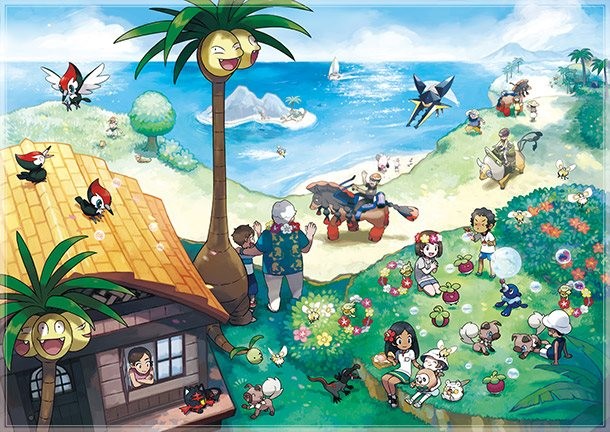
With the NX looming next year and whatever that could mean for handheld Nintendo consoles, will Sun and Moon be the last Pokémon games for 3DS?
Junichi Masuda: When it comes to the main series, thinking of Pokémon RPGs that we develop at Game Freak, we always really considered the timing of when we released them. There has to be a certain point where we're able to release the games and get them into the hands of enough people, to make sure the audience is big enough. This year, with Pokémon Sun and Moon, obviously we're going to be starting to think about the next title, and then depending on what that timing is, I think that will determine which we platform we would release it on.
A fan-created game called Pokémon Uranium released recently. Did you get a chance to look at it? Were you impressed by?
Junichi Masuda: Probably because I'm active on Twitter, a lot of people send me information and stuff like that. I've definitely seen the name; I haven't actually looked into the project though. The people who created that though, if they have the skill and ability and stamina to create something like that, they should definitely get a job at a developer somewhere!
What are your thoughts on the state of stereoscopic 3D? None of the 3DS Pokémon games have been in full stereoscopic 3D, and Nintendo seems less focused on the feature overall.
Junichi Masuda: Definitely, it's a cool feature of the 3DS, we think, but at the same time, we really want to kind of focus on making these really rich graphics and visual expressions, and sometimes you have to make certain sacrifices to achieve that. At the same time, being an RPG, they're going to play for probably dozens of hours, we always thought that with Pokémon, that it's important for the player to see that 3D effect in really effective locations as we see it instead of keeping it on the entire time.
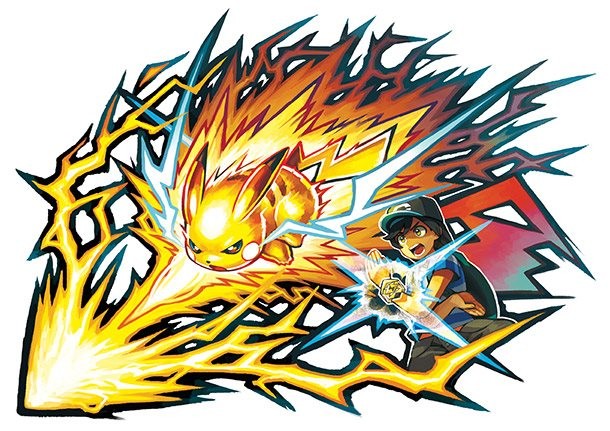
What is the current state of Mega-Evolutions in Pokémon?
Shigeru Ohmori: With Pokémon Sun and Moon, we wanted to focus on a new addition to the battles, and that's what we put in as the Z moves. The basic concept is that each Pokémon in the game will be able to use one of these Z moves once per battle to unleash a really powerful move. We felt that really increases the range of Pokémon that can be viable in a battle from a strategy perspective. That really allows people to use a lot of different Pokémon. We really wanted to have people kind of get used to this new idea, this new strategic element. So over the course of the main scenario of the main game, Mega Evolutions don't appear. But once you finish the story, you unlock the access to Mega Evolve Pokémon. You run through the main game learning about these new Z moves, and after the game you unlock more strategic depth by combining Z move with mega-evolve Pokémon.
A criticism of Omega Ruby and Alpha Sapphire here in America that became an internet meme is that the game had too much water. Will Sun and Moon also have too much water or will there be less water?
Shigeru Ohmori: Each game really tries to uniquely define the region strengths and characteristics, so with Hoenn we put in a lot of water because we wanted to put some of the focus on diving around to the deep sea or use Surf to get around the region, so that was where we had a lot of water in that game. With Sun and Moon, if you look at the map of it looks like there's a lot of water, but in the actual game itself I think you'll see that there's quite a bit less water that you traverse across.
As I mentioned earlier, in Pokémon Sun and Moon one of the core ideas is that you’re going across all these different islands completing these challenges as a rite of passage type of thing. You go around conquering each of the different islands, and then there's new excitement and new unique features awaiting you on the next island. So that was one of the things we wanted to focus on and really make it look different than before.
Battles in the game look like they take place in the true environment for the first time. It looks like your opposing Trainer actually appears in the battlefield now for the first time, too. Is there a reason it’s taken so long for the combat setting to look like this? Or has it been simply a technical restriction?
Shigeru Ohmori: We're always experimenting with a lot of things internally at Game Freak and before this project began, we were trying to figure out the best way to make the player feel like they're battling in that spot where they had an encounter. I think that’s the way it appears in Sun and Moon as a result of those experiments. It really often ties back to what I was saying earlier about the Alola region. I really wanted to express a sense of life and nature. Having those encounters take place when you're immersed in this sense of nature makes it more seamless and also helps achieve that goal as well.
Have you ever forgotten the name of a Pokémon?
Junichi Masuda: We definitely forget a lot of Pokémon names quite a bit. One of the reasons for that is while developing the game we call all the Pokémon by code names. So it would be years where those kind of take hold. We often don't remember the final names of the Pokémon. We definitely remember their code names.
What are some of the strangest code names you've had? Can you share any?
Junichi Masuda: I can't really say too much, because they're development code names. Back in the early days we got a little bit more creative with the development names, but these days it's a lot more plain. Like for example, Crabrawler's code name was just Crab 1. So it wasn't anything special, but I can't really say too much because they were development names.
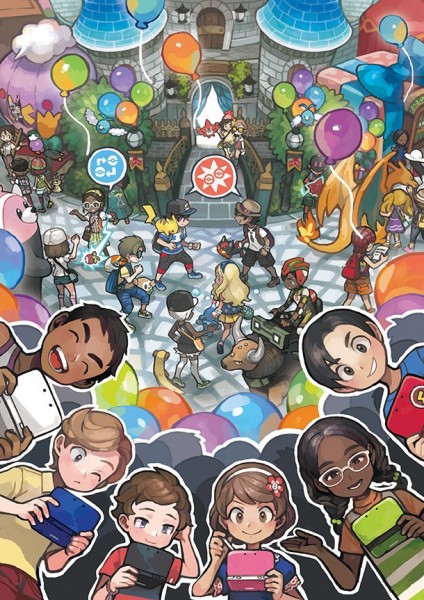
Do you remember Pikachu's code name?
Junichi Masuda: The original game, those early days we were a small group. We didn't have a lot of advertising, so we didn't care about having development names at that point. I can't even remember if Pikachu even had a code name.
What dictates if a Pokémon has three evolutions? Were they all meant to have three evolutions at some point?
Junichi Masuda: So we always look at the Pokémon as living creatures especially when we get inspiration from existing animals, like say a caterpillar evolves into a butterfly. That kind of stuff makes sense, but really it just depends on the Pokémon. When we're creating it, if it makes sense that it would have evolved forms and there's a good idea for it then we'll go with that but it's really a case by case thing.
I'm seeing a lot more Pokémon based on inanimate objects like Klefki, the sand castle, and the lei from Sun and Moon. Are you running out of animals?
Junichi Masuda: I don't really feel we are running out of material, especially with the series as it’s progressed. We've tried to find more of a fine balance of creatures that may look like they could be typical animals and also more Pokémon based on inanimate objects. I don't feel like we're running out of material or ideas anytime soon, but I think it's the result of trying to find that balance.
Pokémon can only say their own name. Pikachu, for example, can only speak his name. Do they say their own name and then that's what humans decide to call them? Or do humans start calling them their names and then the Pokémon recognize that and start saying it?
Junichi Masuda: I don't really know actually. Honestly, though, that a separation of the main series RPGs from the animated series. It's the animated series in which the Pokémon are always saying their names like that. I think we decided to do that in the animated series to make it easier for audiences to understand which Pokémon it is. Maybe in that universe the Pokémon starting saying their names first and then humans went, "Oh, okay. That must be your name."
Final thoughts??
Shigeru Ohmori: In Pokémon Sun and Moon we've really tried to put in a lot of new, cool gameplay elements so it facilitates communication between players or just new ways for people to have fun. One of them the Poke-Finder feature, which is a photo-taking mode that's similar to Pokémon Snap, I think a lot of fans will really enjoy seeing that come back to Pokémon. In terms for the battle audience we put in the Battle Royale which allows up to four people to battle locally and all new gameplay modes. I think there's a lot of really cool things that fans of Pokémon are gonna find to be very exciting. I hope people look forward to it.
Pokémon Sun and Moon releases November 18 for 3DS. Transcription by interns Ian Boudreau, Michael Leri, and Kevin Slackie.

